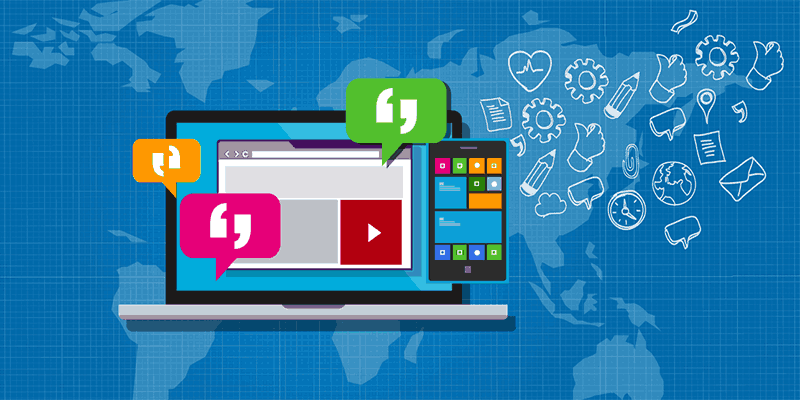In the digital age, customer portals have become an essential component of modern businesses. They provide a centralized platform where customers can access information, manage their accounts, and interact with services. customer portal – https://www.growthster.com/customer-portal This guide explores the features, benefits, and best practices for utilizing a customer portal effectively.
What is a Customer Portal?
1.1 Definition
A customer portal is an online platform designed for customers to interact with a company’s services and manage their accounts. It typically includes various features that facilitate self-service and enhance the customer experience. Customer portals are commonly used in sectors such as banking, telecommunications, utilities, and e-commerce.
1.2 Key Components
- User Authentication: Secure login systems to ensure only authorized users can access the portal.
- Dashboard: A central interface that provides an overview of relevant information and services.
- Account Management: Features for users to view and update personal information, manage subscriptions, and handle billing.
- Support and Communication: Tools for submitting support requests, chatting with customer service, and accessing FAQs or knowledge bases.
Features of a Customer Portal
2.1 Account Management
- Profile Management: Allows users to view and update their personal details, contact information, and preferences.
- Billing and Payments: Enables users to view invoices, make payments, and set up automatic billing.
- Subscription Management: Provides options to manage subscription plans, upgrade or downgrade services, and view usage statistics.
2.2 Support and Service
- Help Desk Integration: Users can submit support tickets, track the status of their requests, and communicate with support staff.
- Live Chat: Offers real-time assistance through chat support, enhancing customer service.
- Knowledge Base: A repository of articles, guides, and FAQs to help users find answers to common questions.
2.3 Personalization
- Customizable Dashboards: Users can personalize their dashboard to display relevant information and shortcuts.
- Notifications and Alerts: Provides notifications for important updates, deadlines, or system changes.
- Recommendation Engines: Suggests products, services, or actions based on user behavior and preferences.
2.4 Security and Privacy
- Secure Authentication: Implements strong authentication methods, such as multi-factor authentication (MFA), to protect user accounts.
- Data Encryption: Ensures that sensitive data is encrypted during transmission and storage.
- Access Controls: Restricts access to certain features or information based on user roles and permissions.
Benefits of a Customer Portal
3.1 Enhanced Customer Experience
- 24/7 Access: Customers can access their accounts and perform transactions at any time, improving convenience.
- Self-Service Capabilities: Allows customers to handle tasks independently, reducing the need for direct customer support.
- Real-Time Information: Provides up-to-date information on account status, billing, and service usage.
3.2 Increased Efficiency
- Reduced Support Costs: By enabling self-service, companies can lower the volume of support requests and associated costs.
- Automated Processes: Streamlines administrative tasks, such as billing and account management, through automation.
3.3 Improved Customer Engagement
- Personalized Experience: Customizable features and recommendations enhance user engagement and satisfaction.
- Proactive Communication: Notifications and alerts keep customers informed about important updates and deadlines.
3.4 Data Insights
- Usage Analytics: Provides valuable insights into customer behavior and usage patterns, aiding in decision-making and strategy development.
- Feedback Collection: Gathers customer feedback and reviews to improve services and address concerns.
Best Practices for Implementing a Customer Portal
4.1 User-Centric Design
- Intuitive Interface: Design a user-friendly interface with clear navigation and easy access to key features.
- Responsive Design: Ensure the portal is accessible on various devices, including desktops, tablets, and smartphones.
4.2 Security Measures
- Robust Authentication: Implement strong authentication methods and regular security audits to protect user data.
- Privacy Compliance: Adhere to privacy regulations and ensure data protection practices are in place.
4.3 Regular Updates and Maintenance
- Feature Enhancements: Continuously improve the portal by adding new features and addressing user feedback.
- System Maintenance: Perform regular maintenance and updates to ensure the portal remains functional and secure.
4.4 User Training and Support
- Onboarding: Provide clear instructions and resources to help users get started with the portal.
- Ongoing Support: Offer support and training resources to assist users in navigating and utilizing the portal effectively.
4.5 Integration with Other Systems
- CRM Integration: Connect the portal with customer relationship management (CRM) systems to synchronize data and enhance functionality.
- Third-Party Services: Integrate with third-party services, such as payment gateways or help desk tools, to expand capabilities.
Common Challenges and Solutions
5.1 Technical Issues
- Downtime: Minimize downtime by implementing redundant systems and monitoring for potential issues.
- Performance: Optimize the portal for fast load times and efficient performance.
5.2 User Adoption
- Resistance to Change: Encourage adoption through clear communication, training, and demonstrating the benefits of the portal.
- Usability Issues: Address usability concerns by gathering user feedback and making necessary improvements.
5.3 Data Security
- Data Breaches: Protect against breaches by following best security practices and conducting regular security assessments.
- Compliance: Ensure the portal complies with relevant data protection regulations, such as GDPR or CCPA.
Conclusion
A well-designed customer portal can significantly enhance the customer experience, streamline operations, and provide valuable insights. By implementing best practices and addressing common challenges, businesses can create an effective portal that meets the needs of their customers and supports their overall goals. Whether you are setting up a new portal or improving an existing one, focusing on user-centric design, security, and integration will lead to a more successful and impactful customer portal.



